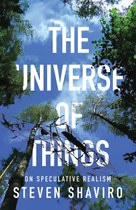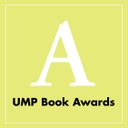Norte Dame Philosophical Reviews: 'The Universe of Things: On Speculative Realism'
 Steven Shaviro sets out to accomplish two main tasks that serve as a basis for many interesting arguments and connections. First and foremost, Shaviro sets out to defend a version of philosophical realism, or what has come to be called speculative realism whereby what is asserted is not simply the claim that there is a reality independent of our perceptions, thoughts, and opinions regarding this reality, but rather the much more provocative claim that this reality provokes speculation. Shaviro is quite forthright on this point: "any true realism must be speculative. . . . Confronted with the real, we are compelled to speculate . . . we mustthink outside our own thought, and we must positively conceive the existence of things outside our own conceptions of them" (67). Secondly, to lay out his own version of speculative realism, he draws upon the work of Alfred North Whitehead to set up the contrast between his Whitehead-inspired arguments and the arguments one finds among the philosophers most commonly associated with speculative realism. Shaviro announces his intentions from the beginning when he claims that his "book takes a new look at the philosophy of Whitehead in the light of a number of recent developments in continental philosophy that can be grouped under the rubrics of 'speculative realism'" (1). These recent developments in continental philosophy include the work of, among others, Graham Harman, Quentin Meillassoux, and Ray Brassier. The subsequent chapters are largely structured around a critical survey and reinterpretation (or 'translation' in Bruno Latour's sense of the term, a term Shaviro himself adopts) of this work in light of Whitehead's ownavant la lettre speculative realist philosophy.
Steven Shaviro sets out to accomplish two main tasks that serve as a basis for many interesting arguments and connections. First and foremost, Shaviro sets out to defend a version of philosophical realism, or what has come to be called speculative realism whereby what is asserted is not simply the claim that there is a reality independent of our perceptions, thoughts, and opinions regarding this reality, but rather the much more provocative claim that this reality provokes speculation. Shaviro is quite forthright on this point: "any true realism must be speculative. . . . Confronted with the real, we are compelled to speculate . . . we mustthink outside our own thought, and we must positively conceive the existence of things outside our own conceptions of them" (67). Secondly, to lay out his own version of speculative realism, he draws upon the work of Alfred North Whitehead to set up the contrast between his Whitehead-inspired arguments and the arguments one finds among the philosophers most commonly associated with speculative realism. Shaviro announces his intentions from the beginning when he claims that his "book takes a new look at the philosophy of Whitehead in the light of a number of recent developments in continental philosophy that can be grouped under the rubrics of 'speculative realism'" (1). These recent developments in continental philosophy include the work of, among others, Graham Harman, Quentin Meillassoux, and Ray Brassier. The subsequent chapters are largely structured around a critical survey and reinterpretation (or 'translation' in Bruno Latour's sense of the term, a term Shaviro himself adopts) of this work in light of Whitehead's ownavant la lettre speculative realist philosophy.
The most significant parallel between Whitehead and the speculative realists, on Shaviro's account, follows directly from Whitehead's critique of the bifurcation of nature. When it comes to the bifurcation between the phenomenal appearances of "the red glow of the sunset" and the physical reality of "'the molecules and electric waves' of sunlight refracting into the earth's atmosphere", Whitehead is quite clear in arguing that one is not more real than the other. To the contrary, for Whitehead "we may not pick and choose". The red glow of the sunset and the electric waves of sunlight each have for Whitehead, as Shaviro points out, "the same ontological status" (2). Stated differently, nature is not divided between material things that are inaccessible to us except insofar as they are taken up by the mind in the form of impressions and ideas; rather, things are always already present in other things. Whitehead is clear on this point: "an actual entity is present in other actual entities" (Process and Reality, 50; cited 8). From here we are immediately on the doorstep of a common theme among many of the speculative realist philosophers -- namely, their critique of correlationism, or the view that is traced to Kant whereby we cannot think the nature of objects as they are in-themselves but can only think objects by way of the representations of objects. The nature of reality, therefore, is always correlated with another process (e.g., representational thought) and is never given as it is in-itself but always as something given to a subject. As Meillassoux states what could be called the correlationist problem, "one cannot think the in-itself without entering into a vicious circle, thereby immediately contradicting oneself' (cited 7). One of the central premises upon which the arguments in Shaviro's book develop is that Whitehead's efforts to avoid the bifurcation of nature provide a different way of addressing and resolving this correlationist problem.
Continue reading the review here.
By: Jeffrey A. Bell
Story Date: 2015-02-17T05:51:00+00:00



